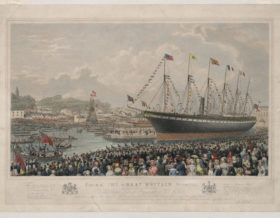Printing revolution
Advances in technology in the Age of revolution meant printing became cheaper and printed materials could be mass-produced. This accelerated the pace of change, with radicalism and innovation now spreading beyond the confines of one region to the wider country and even across the seas. Newspapers, pamphlets, posters and satirical cartoons possessed a power and a reach that could undermine the grandest established orders. They also had a major part to play, along with novels and other literature, in raising the profile of events and campaigns calling for political and social change and in support of the victims of rapid industrialisation and of slave labour. Despite attempts to challenge, censure and curb the ‘freedom of the press’, the democratisation of print proved unstoppable.




















